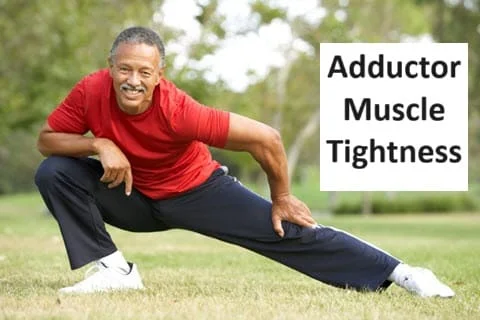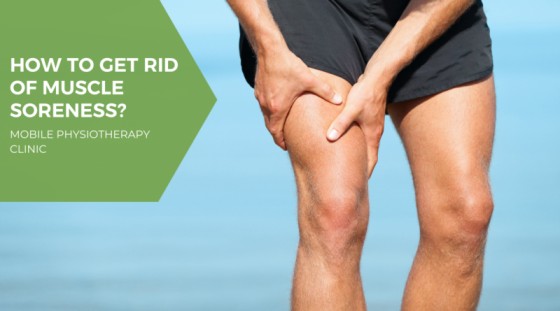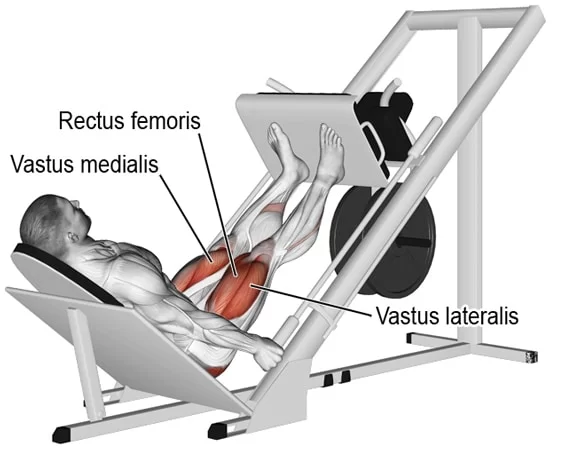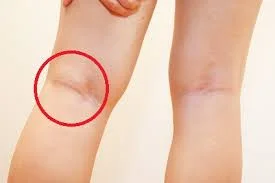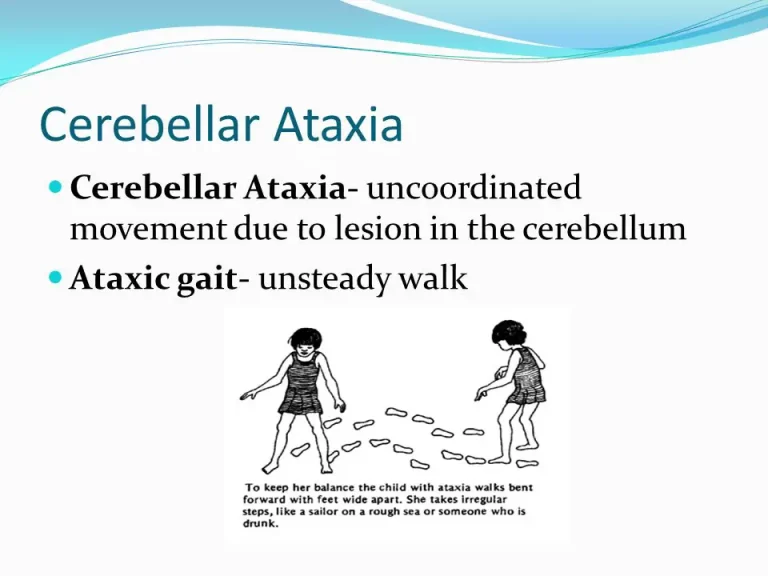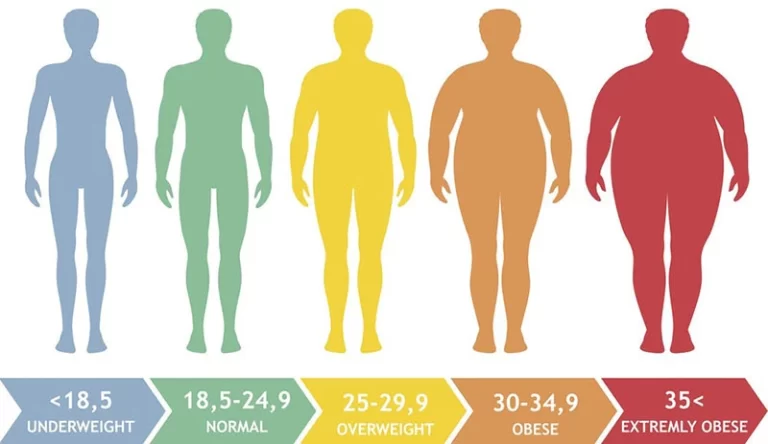Adductor Muscle Tightness
The term “adductor muscle tightness” describes a situation in which the thigh’s inside adductor muscles are more tense or contracted than usual.
Introduction
Adductor muscle tightness refers to the condition where the muscles located on the inside of the thigh, called the adductor muscles, are tense or contracted. This tightness may cause pain in the inner thigh or groin area, as well as discomfort and restricted range of motion. Several factors, such as overuse, imbalanced muscles, insufficient stretching, or injury, can cause it.
It’s critical to include stretching and strengthening exercises in your routine to address adductor muscle tightness. Stretching techniques that gently target the adductor muscles can help increase flexibility and relieve tightness. Leg raises and side lunges are two strengthening exercises that can help stabilize the muscles and stop further tightness.
Rest and appropriate recovery are also essential for facilitating the healing and relaxation of the muscles. Ice application can help relieve pain and reduce inflammation in the affected area. It’s best to speak with a medical professional or physical therapist for a thorough evaluation and individualized treatment plan if the tightness continues or gets worse.
What is Adductor Muscle Tightness?
These muscles are essential for bringing the legs together, supporting the pelvis, and helping with activities like running, jumping, and walking.
Tightness in the adductor muscles can cause several symptoms and problems, such as:
- Limited Range of Motion: The range of motion in the hips and legs can be restricted by tight adductor muscles, which can make lateral movements or spreading the legs apart more challenging.
- Discomfort or Pain: The groin, inner thigh, or pelvic area may feel uncomfortable or painful due to tightness in the adductor muscles, particularly when performing exercises that use these muscles.
- Muscle Imbalance: Changes in movement patterns and a higher risk of injury can result from imbalances between the adductor muscles and their opposing muscle groups, such as the abductors (the muscles on the outside of the thigh).
- Reduced Flexibility: The hip and groin region’s reduced flexibility due to tight adductor muscles can impact an athlete’s overall range of motion and performance.
Many factors, such as overuse, repetitive motions, insufficient stretching, muscle imbalances, sports injuries, or biomechanical problems, can lead to adductor muscle tightness.
Stretching, strengthening, rest, appropriate recovery, and, in certain situations, medical intervention or physical therapy are recommended treatments for adductor muscle tightness to address underlying causes and prevent recurrence.
Anatomy
Our focus is frequently diverted from the adductors to the other leg muscle groups, such as the quadriceps, hamstrings, glutes, and calves. It’s usual to think that tight quadriceps or hamstrings are responsible for knee or back pain, etc. Tight adductor muscles may be the cause of the problem, though this is most likely not the case.
The movement of a leg towards the body’s center, or adduction, is due to the adductor muscles, a group of five muscles found in the inner thighs of the legs. The term “adductor,” which comes from the Latin words “ad,” which means “towards,” and “ducere,” which means “to lead,” explains how the muscles work.
The group of adductor muscles involves:
- Adductor Magnus: The adductor group’s largest and strongest muscle is this one. It attaches to the femur (thigh bone) after emerging from the pelvic ischium and pubis bones. Thigh adduction, hip flexion, and hip extension are all aided by the adductor magnus. The largest group of the adductor muscle group, the adductor magnus, helps in hip extension. Adduction and medial rotation of the thigh (moving the thigh towards the center of the body) at the hip joint are the adductor magnus’s principal actions.
- Adductor Longus: This muscle is located in the thigh at the surface. It attaches to the femur after emerging from the pubis. The primary functions of the adductor longus are to aid in thigh adduction and to stabilize the hip joint. The thigh’s adduction, flexion, and rotation at the hip are all controlled by this muscle, which goes by the name of the longest adductor.
- Adductor Brevis: The adductor brevis begins in the pubis and inserts into the femur, situated deep to the adductor longus. It gives stability to the hip joint and aids in thigh adduction. Positioned between the pectineus and the adductor longus is the adductor brevis. The hip is adducted, flexed, and rotated medially.
- Gracilis: Gracilius, which means “slender,” supports the hip’s medial rotation and adduction of the thigh. In addition, it flexes the leg at the knee. The gracilis muscle is thought to function similarly to the adductor magnus group, despite not being a member of it technically. It helps with thigh adduction. It attaches to the tibia (shinbone) after emerging from the pubis.
- Pectineus: The pectineus, a muscle located in front of the hip joint, also aids in thigh adduction. It attaches to the femur after emerging from the pubis. Thigh flexion and adduction at the hip are controlled by the pectineus, a muscle found in the upper inner thigh. In cases of pulled groin injuries, it is typically the cause of pain.
The anterior division of the femoral nerve and branches of the obturator nerve innervate the adductor muscles. Both the femoral and obturator arteries’ branches supply these muscles with blood.
To diagnose and treat conditions like adductor muscle strains, injuries, or tightness, one must have a thorough understanding of the anatomy of the adductor muscles. These muscles can be targeted with strengthening and stretching exercises to help reduce tightness, increase flexibility, and reduce the risk of injury.
So, What Do the Adductors Do?
Your femur (thigh bone) is adducted by using every muscle on your inner thigh that you can feel, from your hip to your knee. In other words, these muscles move your thighs towards your body’s midline.
However, the adductor muscles are capable of more.
The adductor muscles are crucial to human function because they aid in stabilizing and balancing the other leg muscles. Both the knees and the hips benefit from this stability.
Many of these muscles have other uses in addition to their primary purpose of bringing your leg toward the body’s midline.
The three adductors, for instance, also medially rotate the leg. By extension, they aid in the inward rotation of the leg. However, lateral rotation is produced by the pectineus, which rotates the leg outward.
The adductors longus, brevis, and pectineus flex the extended femur. In other words, they assist in raising your thigh bone in front of you.
Naturally, when your knee is bent, the gracilis bends it and rotates it toward your body’s midline. The gracilis crosses the knee joint, which explains this.
Your adductor group is a component of your core muscles in addition to all of this.
Sign and Symptoms
Depending on the degree of tightness and personal variables, adductor muscle tightness can present with a variety of signs and symptoms. Some common signs and symptoms involve:
- Groin or Inner Thigh Discomfort: The groin or inner thigh region may feel painful or uncomfortable due to tight adductor muscles. Walking, running, and side-to-side exercise routines are among the activities that can cause this discomfort because they involve the adductor muscles.
- Limited Range of Motion: It can be challenging to spread the legs apart or make lateral movements when the adductor muscles in your tense hips and legs are out of joint. Sports performance and daily activities may be impacted by this range of motion restriction.
- Stiffness or Tension: Tension or stiffness in the inner thigh region can be felt by people who have tight adductor muscles, particularly when they try to stretch or move their legs apart.
- Muscle Imbalance: An imbalance between the adductors and their opposing muscle groups, like the abductors (the muscles on the outside of the thigh), can result from tightness in the adductor muscles. This imbalance could change how you move and make you more prone to injury.
- Difficulty with Certain Movements: It may be difficult to execute motions that call for wide leg positioning or hip abduction if the adductor muscles are tight. Certain movements, like squatting, lunging, or sitting cross-legged, can be painful or limited.
- Localized Tenderness: There are instances where people with tight adductor muscles may feel sensitive to touch or have localized tenderness in the inner thigh or groin region.
- Compensatory Movements: People may inadvertently adopt compensatory movements or altered biomechanics to avoid the discomfort or pain caused by tight adductor muscles. This can result in further problems or injuries in other parts of the body.
Adductor muscle tightness must be treated right away to stop it from getting worse and possibly developing into more serious issues.
To relieve tightness, increase flexibility, and lower the risk of injury, try adductor-specific stretches, strengthening exercises, and appropriate warm-up methods. It is advisable to consult a healthcare provider or physical therapist for a customized treatment plan if symptoms worsen or persist.
Causes of Adductor Muscle Tightness
Adductor muscle tightness can be caused by various factors, including:
- Overuse or Repetitive Movements: Tightness in the muscles can result from doing exercises that use the adductor muscles frequently without providing sufficient rest or recovery. This frequently happens to athletes or people who play sports like soccer, hockey, or martial arts that use the adductor muscles frequently.
- Muscle Imbalances: Adductor muscle tightness may be caused by imbalances between the adductor muscles and their opposing muscle groups, such as the abductors (the muscles on the outside of the thigh). One muscle group’s weakness or tightness can cause compensatory alterations in movement patterns, which puts more strain on the adductors.
- Poor Flexibility: Over time, the adductor muscles may become tense due to inadequate stretching or flexibility training. Inadequate stretching can cause the muscles to progressively lose their capacity to fully extend, which can result in stiffness and a restricted range of motion.
- Inadequate Warm-Up or Cool Down: Inadequate pre-activity warming or post-exercise cooling down can exacerbate muscle tension, particularly in the adductor muscles. A good warm-up increases blood flow and flexibility to the muscles, preparing them for action, and a proper cool-down promotes muscle recovery to help avoid stiffness and tightness.
- Sedentary Lifestyle: Sitting still or being inactive for extended periods can cause tightness in the muscles, especially the adductor muscles. Long periods of sitting can tighten the hip flexors, which can then indirectly affect the abductors and result in inner thigh tightness.
- Previous Injuries or Trauma: Previous sprains or strains to the adductor muscles or surrounding structures can cause scar tissue to form and decrease flexibility, which can prolong tightness and stiffness.
- Biomechanical Factors: The mechanics of movement can be altered by structural abnormalities or biomechanical problems, such as leg length discrepancies or pelvic misalignment, which increase the stress on the adductor muscles and cause tightness and discomfort.
- Neuromuscular Conditions: Neuromuscular diseases or certain neurological conditions can impact muscle tone and lead to secondary symptoms such as adductor muscle tightness.
Effective treatment and prevention of adductor muscle tightness depend on addressing its underlying causes. This usually entails a mix of strengthening and stretching exercises, appropriate warm-up and cool-down methods, rest, and, if required, corrective surgery or physical therapy to address any biomechanical problems.
Risk Factor
Tightness in the adductor muscles can cause a number of hazards and difficulties, especially for those who play sports or engage in physical activity. The following are a few possible risk factors for tightness in the adductor muscle:
- Increased risk of injury: A body imbalance caused by taut adductor muscles can raise the risk of sprains, strains, and other injuries, especially in the groin area. This is particularly common in sports like basketball, soccer, and sprinting which call for quick acceleration or abrupt direction changes.
- Compromised biomechanics: The biomechanics of motions can be changed by tight adductor muscles, which can impact the alignment and functionality of nearby joints like the hips and knees. Over time, this may result in subpar movement patterns, diminished performance, and even overuse injuries.
- Reduced flexibility and range of motion: Activities requiring a broad range of motion, like jumping, kicking, and lateral movements, can be hindered by tight adductor muscles that limit the flexibility and range of motion in the hip joint. Decreased flexibility can also make stretching exercises less effective and raise the possibility of spraining your muscles when exercising.
- Decreased athletic performance: Tightness in the adductor muscles can make it more difficult to generate power and perform efficient movements, which can impair sports performance. Due to impaired muscle function and mobility, athletes may see a decline in their overall athletic prowess as well as in speed and agility.
- Chronic pain and discomfort: Chronic pain and discomfort, especially in the groin area, can result from adductor muscle tightness. This might get in the way of everyday tasks, involvement in sports, and general quality of life, which could cause frustration and lower motivation for exercise.
- Increased susceptibility to pelvic and lower back issues: Tight adductor muscles may be a factor in pelvic imbalances, which may result in problems like sacroiliac joint dysfunction, pelvic tilt, and lower back pain. These issues can intensify pain and tightness in the muscles, leading to a vicious cycle of dysfunction and increased risk of injury.
- Impact on posture: Tight adductor muscles can cause imbalances in pelvic alignment or pull the pelvis into an anterior tilt, which can lead to bad posture. This raises the possibility of postural-related pain and dysfunction by causing compensatory alterations in other body parts like the shoulders and spine.
Targeted stretching, strengthening, and mobility exercises, along with the inclusion of suitable warm-up and cool-down routines, can help reduce the risks associated with adductor muscle tightness and support the best possible musculoskeletal health and athletic performance. It is best to consult with a trained healthcare or fitness professional to create a customized plan for treating adductor muscle tightness and reducing related risks.
Diagnosis
To diagnose adductor muscle tightness, a medical expert will usually do a comprehensive assessment, frequently beginning with the following actions:
- Medical History: First, your healthcare provider will ask you about your symptoms, including when they first appeared, what moves or activities make the tightness worse or better if you have ever had any accidents or illnesses, and any pertinent medical history.
- Physical Examination: An ocular examination is essential for the diagnosis of tight adductor muscles. The adductor muscles will be palpated by your healthcare practitioner to determine any painful or tense spots. Additionally, they will evaluate your range of motion, observing any restrictions or soreness during adductor muscle-related motions.
- Functional Assessment: To spot any imbalances or compensations that can lead to adductor muscle tightness, your healthcare professional may watch how you move and how you hold yourself. They might also evaluate your gait and your manner of moving as you run or walk.
- Flexibility Testing: The adductor muscles’ and surrounding tissues’ flexibility may be assessed using flexibility tests like the Ober or Thomas tests.
- Diagnostic Imaging: Diagnostic imaging tests, such as CT, MRI, or ultrasounds, may occasionally be prescribed to do a more thorough examination of the adductor muscles and associated structures. These imaging tests can assist in eliminating other possible tightness-causing factors, such as strained or torn muscles.
- Electromyography (EMG): An EMG test is used to evaluate muscular electrical activity. It can be used to evaluate adductor muscle performance and spot any irregularities in their patterns of activation.
Your healthcare professional can diagnose adductor muscle tightness based on the results of these evaluations and provide a personalized treatment strategy for you.
Stretching, strengthening, manual therapy, posture correction, and lifestyle changes are some of the possible treatment options. To properly treat adductor muscle tightness, you must adhere to your doctor’s advice and make all scheduled physical therapy appointments.
Differential Diagnosis
Differential diagnosis in the context of adductor muscle tightness entails separating out several possible adductor muscle discomfort or tightness causes. Usually, this process entails taking into account various ailments or elements that might be causing the symptoms. The following are some potential variables to take into account for a thorough evaluation:
- Muscle Strain: Tightness may result from strain or overuse of the adductor muscles, especially if there has been recent exercise or trauma to the adductor muscles.
- Hip Flexibility Issues: Limited hip mobility or flexibility can occasionally result in tightness in the adductor muscles. Hip impingement and hip labral tears are examples of such conditions.
- Pelvic Alignment Issues: Tightness or discomfort in the adductor muscles can result from pelvic misalignment or dysfunction. Evaluations may be required for conditions like pelvic tilt or pelvic instability.
- Nerve Impingement: Tightness can also result from irritation or compression of the nerves supplying the adductor muscles. Referred symptoms in the adductor region can result from diseases like obturator nerve entrapment or lumbar radiculopathy, which is a trapped nerve in the lower back.
- Joint Pathology: Adductor tightness may be exacerbated by pathologies that impact the hip joint or nearby structures. Considerations may need to be made for ailments such as synovitis, femoroacetabular impingement (FAI), and osteoarthritis.
- Soft Tissue Restrictions: Tightness and discomfort may be brought on by adhesions, scar tissue, or trigger points in the adductor muscles or the soft tissues around them.
- Systemic Conditions: Muscle tightness can occasionally be a symptom of systemic illnesses like gout or inflammatory diseases like rheumatoid arthritis or metabolic disorders.
- Referred Pain: There are occasions when pain in the adductor region is misinterpreted as coming from another part of the body (such as the lumbar spine or the sacroiliac joint).
- Overuse or Poor Biomechanics: Adductor muscle tightness can be caused by poor biomechanical patterns or chronic overuse during exercises like weightlifting or running.
- Other Musculoskeletal Injuries: The adductor muscles may be indirectly impacted by concurrent injuries or imbalances in other muscle groups, such as the hamstrings, gluteal muscles, or quadriceps.
To help determine the underlying cause of adductor muscle tightness, differential diagnosis usually entails a complete history taking, physical examination, and possibly imaging studies (such as X-rays, MRIs) or other diagnostic tests.
Accurately diagnosing and treating the condition can be aided by consulting with a healthcare professional, such as a physical therapist, sports medicine physician, or orthopedic specialist.
Treatment of Adductor Muscle Tightness
Exercises that stretch and strengthen the adductor muscles, rest, and lifestyle changes are commonly used to treat adductor muscle tightness. The following methods are frequently employed to treat tightness in the adductor muscle:
- Stretching Exercises: Stretching the adductor muscles regularly can help reduce tightness and increase flexibility. The butterfly stretch, the seated groin stretch, and the standing adductor stretch are all useful stretches for the adductors. Repeat several times on both sides, holding each stretch for 20 to 30 seconds at a time.
- Foam Rolling: Blood flow to the area can be enhanced and tension can be released by massaging the adductor muscles with a foam roller. Using the foam roller, move along the inner thigh, paying particular attention to any sore spots.
- Strengthening Exercises: Maintaining muscle balance and lowering the chance of tightness can be accomplished by strengthening the adductor muscles and their opposing muscle groups, such as the abductors. Exercises that target the adductor and abductor muscles include lateral lunges, clamshells, and side leg lifts.
- Warm-Up and Cool Down: To prepare the muscles for exercise and lower the risk of injury, a proper warm-up must be performed before engaging in any physical activity. Similarly, after engaging in physical activity, gently stretching and cooling down can help avoid adductor muscle stiffness and tightness.
- Rest and Recovery: It’s essential to get enough sleep and recuperation so that the muscles can mend and relax. A period of rest should be allowed in between workouts or strenuous activities to prevent overtraining or undue strain on the adductor muscles.
- Ice Therapy: Adductor muscle tightness can be painful and inflammatory. Ice applied to the injured area can be beneficial. Several times a day, as needed, apply an ice pack or cold compress for 15 to 20 minutes at a time.
- Physical Therapy: To treat adductor muscle tightness, seeing a physical therapist may be helpful. To address particular problems and enhance muscle function, a physical therapist can offer customized treatment plans, manual therapy techniques, and targeted exercises.
- Corrective Measures: Long-term relief from adductor muscle tightness requires addressing any underlying biomechanical problems or muscle imbalances. To improve alignment and lessen muscle strain, this may entail orthotic devices, gait analysis, or postural correction.
- Medication and Other Interventions: Over-the-counter painkillers or anti-inflammatory medications may be advised in cases of severe adductor muscle tightness that are accompanied by pain or inflammation. For more severe symptoms, corticosteroid injections or other drugs may be considered; however, these should only be used under a doctor’s supervision.
Before beginning any new exercise program or treatment regimen, it’s crucial to speak with a medical professional or physical therapist. This is particularly valid if you are worried about your symptoms or if you have any underlying medical conditions. Based on your particular requirements and situation, they can offer tailored advice and recommendations.
Physical Therapy
Treating adductor muscle tension can be greatly helped by physical therapy. The following are typical methods and exercises that a physical therapist might suggest:
- Stretching: Exerting yourself gently can help release tight adductor muscles. Exercises like the butterfly stretch, the seated groin stretch, and the standing adductor stretch may be part of this.
- Foam Rolling: The muscles can be made less tense by foam rolling. Your physical therapist could demonstrate to you how to work on the adductor muscles with a foam roller.
- Manual Therapy: The adductor muscles can become less tense with the use of physical therapy treatments like massage or myofascial release.
- Strengthening Exercises: To assist the adductors and lessen stiffness, it can be helpful to strengthen the surrounding muscles. Exercises like leg lifts, clamshells, and squats may fall under this category.
- Functional Exercises: Functional exercises, which are designed to replicate everyday tasks or sports-related activities, may also be included by your physical therapist to enhance your general muscular coordination and balance.
- Postural Correction: Adductor discomfort and bad posture might occasionally be linked. Your physical therapist could evaluate your posture and suggest posture-correcting exercises or modifications.
- Heat and Cold Therapy: Inflammation can be decreased and tense muscles can be relaxed by using heat or cold therapy. It might be suggested by your physical therapist to alternate between hot and cold treatments.
- Electrical Stimulation: Electrical stimulation therapy is sometimes used to assist loosen up tense muscles and enhance blood flow in the afflicted area.
Working closely with a licensed physical therapist who can customize a treatment plan to meet your unique needs and track your progress over time is crucial. They may also guarantee that you’re doing workouts safely to prevent additional damage and offer advice on the correct technique.
Exercises for the Adductor Muscle Tightness
Hip Adductor Stretch
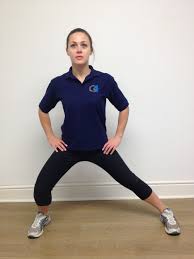
How to proceed:
- Take a standing position to begin.
- Step with your feet wide apart.
- Lower yourself to one side.
- Put forward your hips.
- You can put your foot in a forward or upward position.
- The goal is to experience a groin stretch.
- For 30 seconds, hold.
- Continue on the opposite side.
Stretch With A Strap
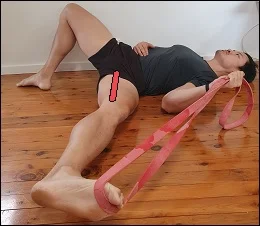
How to proceed:
- Lay flat on the ground with your face up.
- Adjust a strap to fit the foot.
- Lay the leg you want to extend out to the side in this position.
- This leg should remain completely straight.
- To increase the adductor stretch, pull the strap farther into its range.
- Push your hips forward by tensing your glute muscles.
- For 30 seconds, hold.
Inverted Wall Sit
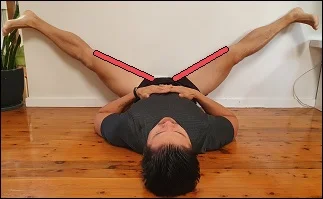
How to proceed:
- Put yourself on your back.
- Hook both legs up against a wall.
- Try to keep your rear end as close to the wall as you can.
- Permit your legs to spread apart.
- Try to feel your adductors stretching.
- Make an effort to keep your legs still.
- For 30 seconds, hold.
Sitting Stretch

How to proceed:
- Take a seat on a chair’s edge.
- As much as possible, spread your feet and knees apart.
- Prop your posture upright.
- Use your hands to force your knees outward.
- Keep your lower back’s arch in place.
- Turn your hips to the front and slant your torso forward.
- For 30 seconds, hold.
Lying Down Stretch
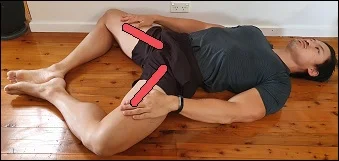
How to proceed:
- Put yourself on your back.
- Bring your feet together at the toes.
- Approach your pelvis with both feet as close as possible.
- Bend your pelvis to the back.
- Your lower back should be flat on the ground.
- Permit the descent of your knees to either side of your torso.
- Let gravity gently push you deeper into the stretch while you relax your legs.
- For 30 seconds, hold.
Butterfly Pose
This traditional yoga pose is a great way to open up your inner thighs. This stretch may be familiar to you from gym class even if you have never practiced yoga.
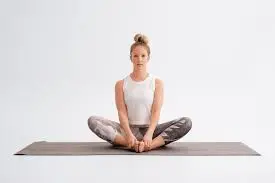
- Place your hands on your knees and sit down on the floor.
- Verify that your SIT bones are pressed firmly into the mat. The bones in your SITs as well as the bones you feel when you sit on your posterior.
- Equal pressure should be applied to both your left and right feet.
- Move your heels in the direction of your crotch. Be careful to maintain contact between your left and right feet as you walk.
- You can sit on a bolster if your knees are higher than your hips. Another option is to move your feet farther away from your crotch. Make every effort to raise your hips above your knees.
- Encircle each foot’s big toe with your thumb and index finger.
- Become longer through your back. Raise your ribs off of your hips and press your belly button up against your back.
- To flex your hips and bring your upper body forward, hinge. For now, maintain a straight back. You should be aware that your pelvis must rotate for your spine to extend forward. Your SIT bones move in tandem with the movements of your pelvis.
- The back and neck should be relaxed.
- Breathe for 5-8 long breaths. Envision inhaling deeply into any tense muscles you sense. Take particular note of how your tight adductors expand when you inhale deeply. Feel the adductors contract and the tension release as you release the breath.
- Firm your midsection and raise yourself up. You can either practice this once and then repeat it.
- To help your knees lower, make sure you rotate your legs from your hip sockets. Your groin will get injured if you attempt to use the force of your arms to slam your knees to the floor.
Wide stance squat
The squat is a popular exercise that promotes whole-leg muscle recruitment, earning it the title of “king of leg exercises.”
Among the many squat variations, the wide stance squat also referred to as a sumo squat, is especially effective in targeting the inner thigh muscles.
This exercise can be done with your body weight alone or with a variety of weighted tools, like a barbell, kettlebell, dumbbell, or sandbag.
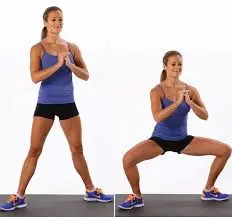
How to proceed:
- Place your feet slightly wider than your shoulders and point your toes slightly outside of your shoes.
- Return to the starting position and gradually drop your hips until your thighs are parallel to the floor.
- Feel the contraction of your adductors and other leg and gluteal muscles as you push through the floor to return to the starting position in a controlled manner.
- Continue for the required amount of sets and repetitions. Try to complete two or three sets of ten to twelve repetitions.
Standing banded adduction
Resistance bands are an excellent tool for effectively training the adductors from a variety of angles when the goal is to isolate them.
Since bands are available in a range of resistance levels and lengths, adjusting the degree of difficulty is simple.
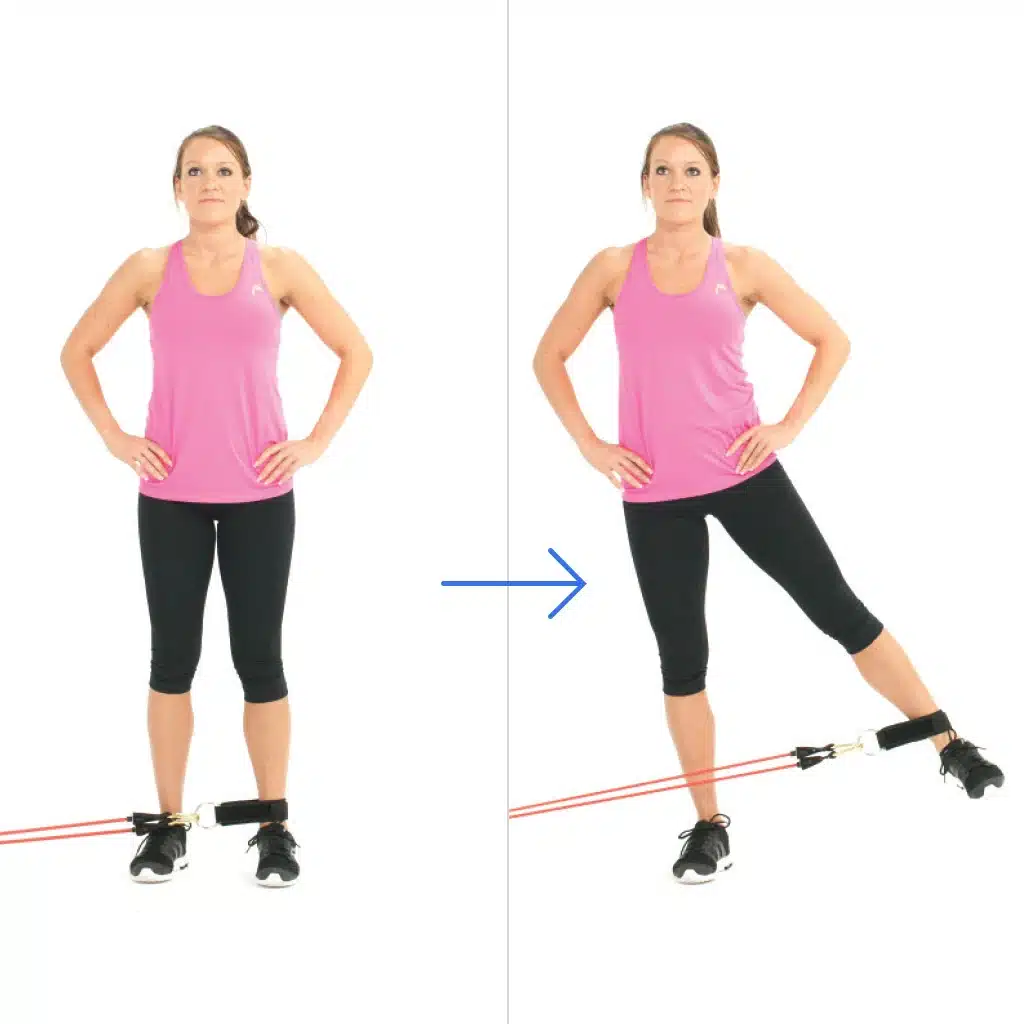
How to proceed:
- To begin, encircle a solid anchor—such as a power rack or other apparatus that is fixed to the ground—with a resistance band.
- Wrap the band around your inner (working) foot while standing with your body facing the anchor point.
- By moving away from the anchor point or tightly wrapping the resistance band, you can change the resistance band’s tension.
- While resisting the movement, let the band pull your leg to the side.
- Start the exercise by standing tall and bringing your banded leg towards your body’s center while contracting your adductors fully.
- Return your leg to the side gradually and under control.
- After the required number of sets and repetitions, switch legs and repeat. Two to three sets of ten to twelve repetitions should be your goal.
Seated banded adduction
Due to its reduced stability requirements, this seated variation of the standing banded adduction is marginally easier.
This variation is a wonderful option for beginners who wish to concentrate on their adductors.
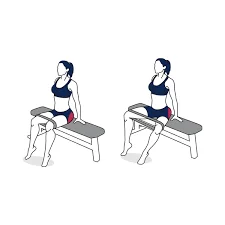
How to proceed:
- To begin, encircle a solid anchor—such as a power rack or other apparatus that is fixed to the ground—with a resistance band.
- With both sides of your body facing the anchor point and band, take a seat on a weight bench.
- Place your inner foot just below your knee and insert it through the band.
- Resist the movement and let the band pull your leg toward the anchor point.
- Contract your adductors to bring your leg back toward your body’s midline.
- Until you’ve completed the required number of sets and repetitions, continue with each leg. Try to complete 2-3 sets of 10–12 repetitions.
Side-lying adduction
This is a fantastic exercise for beginners that can be done without any equipment.
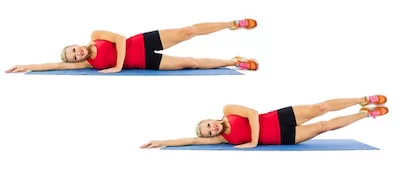
How to proceed:
- Lay down on a mat by your side. Make sure that your hips are stacked and that your spine is neutral. Maintain your top hand on the ground in front of your stomach and your bottom arm folded beneath your head.
- Place your foot flat on the floor in front of your lower leg and bend your upper knee so that it points toward the ceiling.
- Lift your lower leg off the ground while maintaining a long lower leg and a flexed foot. This will activate your adductors.
- Permit your leg to descend to the floor in a controlled, gradual manner.
- For the desired number of sets and repetitions, repeat the movement with your other leg. Try to complete two or three sets of ten to twelve reps.
Copenhagen hip adduction
For more experienced athletes, there is an option for this workout. It uses your body weight to fully isolate your adductors.
Although strength athletes frequently use it as a supplemental exercise, athletes from other sports can also benefit from it, as can those who simply want to strengthen their inner thighs.
This exercise puts your adductors in a slightly compromised position, so be extra careful with it. If done incorrectly, it can increase your risk of injury.
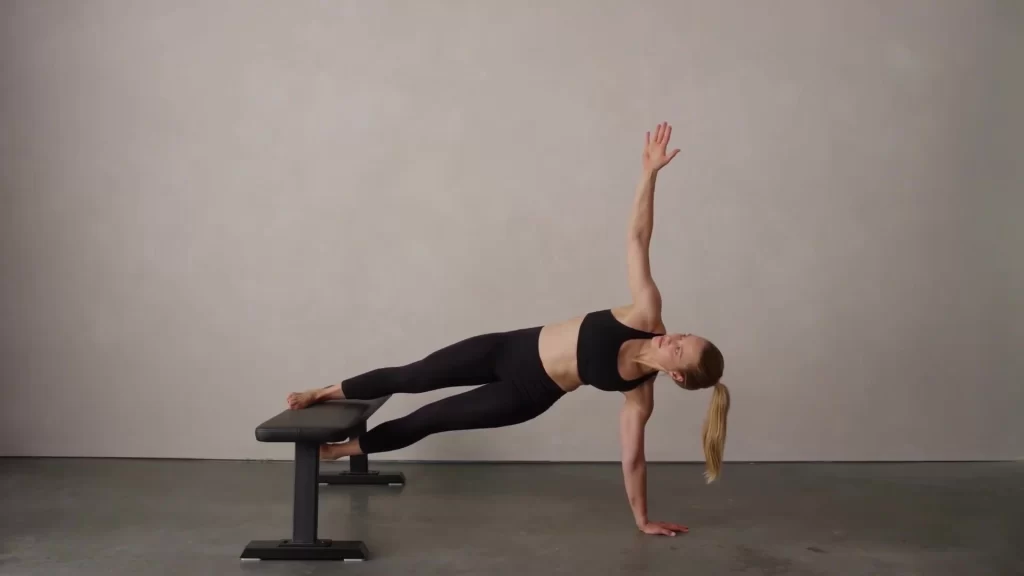
How to proceed:
- Begin in a side plank position, with your legs parallel to a weight bench or other comparable piece of equipment and one elbow resting on the floor or a pad.
- With your bottom leg straight beneath the bench, place your upper leg on it with your knee slightly bent. You will have more stability and a lower chance of suffering a groin injury the higher you rest your top leg on the bench. This exercise will be very difficult if you only rest your ankle on the bench.
- To support your body weight, contract the adductors in your upper leg. Then, gradually raise your lower leg until it makes contact with the bench’s underside.
- Return your body to the starting position by lowering it gradually.
- After you have worked the desired number of reps on that leg, switch to the other leg and work the adductors.
- Continue doing this for each leg for the desired number of sets. Try to complete two or three sets of ten to twelve reps.
Conclusion
In conclusion, adductor muscle tightness can lead to discomfort, limited range of motion, and impaired function in the groin and inner thigh area. Various factors, including overuse, muscle imbalances, poor flexibility, and biomechanical issues, can contribute to adductor muscle tightness. Addressing adductor muscle tightness typically involves a multifaceted approach, including stretching exercises, strengthening exercises, rest, and lifestyle modifications.
Stretching exercises targeting the adductor muscles can help alleviate tightness and improve flexibility while strengthening exercises can restore muscle balance and stability. Physical therapy interventions such as manual therapy, modalities, and functional training can enhance the effectiveness of treatment and promote optimal recovery.
It’s essential to consult with a healthcare professional or physical therapist for an accurate diagnosis and personalized treatment plan tailored to your specific needs and goals. With proper management and adherence to a comprehensive rehabilitation program, adductor muscle tightness can be effectively addressed, allowing for improved function, reduced discomfort, and enhanced overall musculoskeletal health.
FAQs
Do weak glutes cause tight adductors?
While the only initial indications of weak or inhibited glutes are tight hamstrings and adductors, with time, they may lead to conditions involving anterior knee discomfort and tears of the ACL—the lower back hurtsSprains of the hamstrings sprain or impingement on the hip. The primary function of the gluteus medius muscle is hip abduction.
What causes tight adductor muscles?
Sometimes weak or overworked adductors become fibrotic and form adhesions. Performing a length-tension examination will assist you in determining whether you require soft tissue treatment in this location.
Why are my groins so tight?
Constricted groins can have a variety of causes, but a weak gluteus medius that remains over time may be one. A phenomenon called altered reciprocal inhibition, or ARI, is the result of this. An antagonist is a muscle that performs the opposite action; when one muscle is too weak, the antagonist gets overly tight.
Can sitting cause tight adductors?
Tightness: Long periods of inactivity or sitting still can cause the hip adductors to tighten and lose their flexibility. Hip adductor tightness can result in various muscular imbalances as well as discomfort and trouble moving.
Why are inner thighs so tight?
Gluteal muscular weakness, also known as “side butt,” can sometimes be the cause of this. Exercising your inner thighs and strengthening your isolated lateral hips will assist in rectifying this.
Should you massage a tight groin?
Another common approach for relieving groin muscle tension while healing after a strain or tear is massage. This kind of treatment isn’t necessary if the area isn’t sensitive to the touch; otherwise, it could be extremely uncomfortable and painful.
What emotion is tight adductors?
Many people’s adductor muscles are tight. We frequently bend our legs into an adduction position when we sit for extended periods, trying to keep our knees from collapsing. The adductor muscles are associated with intense happiness and pain.
How do you relax your thigh muscles?
Stretch the back of your thigh by elevating one leg towards your chest while lying on your back. Your hands should be behind your knees. The back of your sore thigh should stretch as you gently raise your leg to your chest.
What happens if hip adductors are tight?
Especially in runners, tight adductors might result in knee pain. The adductor muscles pull the thighs together, rotate the upper leg inward, and stabilize the hip.
Is muscle tightness curable?
Muscle stiffness can be relieved by stretching, increasing your exercise frequency, and correcting your posture. In rare cases, a more serious infection or medical condition may be indicated by muscle stiffness. When it coexists with symptoms like a fever, muscle stiffness could be the reason for concern.
Why are my hamstrings so tight?
Long periods of inactivity, inadequate stretching before exercise, straining muscles or another injury, having short hamstrings, or other physical traits that increase the risk of a hamstring strain are some of the causes of tight hamstrings.
How do you loosen a tight hip abductor?
Lying on your back, place your feet flat on the ground and bend your knees.
Arrange your feet in a “4” shape by crossing your right ankle over your left knee.
Holding onto your thigh, slowly pull your right knee nearer to you until your right hip stretches.
Aim for 30 to 60 seconds of holding down.
How do you permanently loosen tight muscles?
Many techniques, such as physical therapy, stretching, massage, foam rolling, and active recovery, can be used to release tense muscles. These techniques can assist in decreasing muscle tension and enhance the general health of the muscles and joints when added to an exercise program.
References
- 5 Exercises to Fix Tight Adductors: Movement Enhanced. 7 May 2023, www.movementenhanced.com.au/blog/5-exercises-to-fix-tight-adductors.
- Image-Redirect Notice. (n.d.). https://www.google.com/url?sa=i&url=https%3A%2F%2Fwww.healthworkstx.com%2Fhow-do-you-loosen-tight-adductors%2F&psig=AOvVaw12LtiCV4EpsNQf-zBPCwd8&ust=1710684780991000&source=images&cd=vfe&opi=89978449&ved=0CBMQjRxqFwoTCOCW7sr7-IQDFQAAAAAdAAAAABBY.
- Stockett, V. A. P. B. S. (2023, September 13). Tight Adductors | How They Cause Back Pain + How to Fix Them. Spinal Rejuvenation. https://www.spinalrejuvenation.net/tight-adductors.
- Image – Redirect Notice. (n.d.). https://www.google.com/url?sa=i&url=https%3A%2F%2Fwww.physio-pedia.com%2FHip_Adductors&psig=AOvVaw2aWPPJff3E3ooQj2vfkvDb&ust=1710136577327000&source=images&cd=vfe&opi=89978449&ved=0CBMQjRxqFwoTCODyyrGB6YQDFQAAAAAdAAAAABBd.

